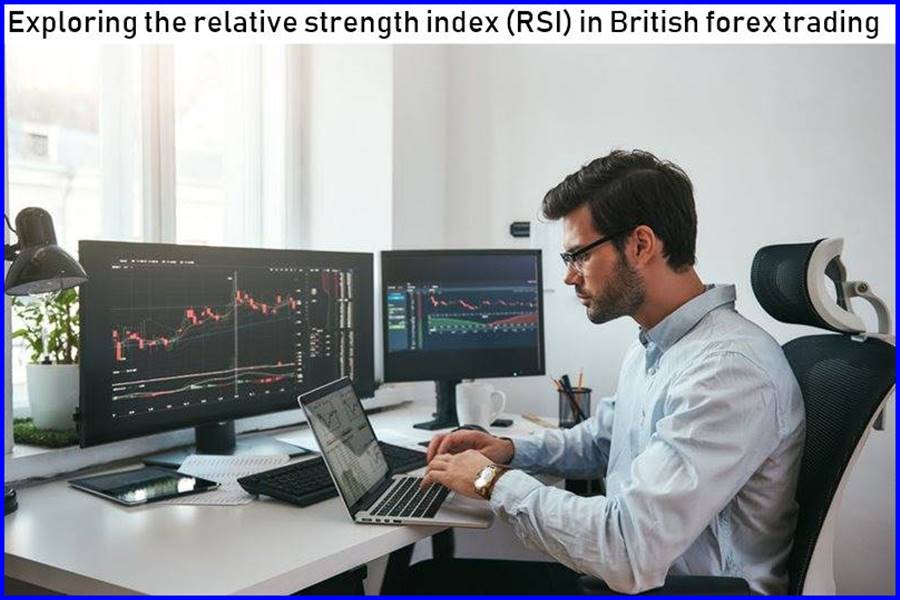Exploring the relative strength index (RSI) in British forex trading
If you’re a forex trader who follows the British pound, you may have heard about the relative strength index (RSI) and how it can be used to help predict price movements. We’ll explore what RSI is and how you can use it to your advantage when trading the British pound. We’ll also look at real-world examples of how RSI has been used to make profitable trades.
What is RSI, and how does it work?
It’s a momentum indicator that tracks the speed and direction of price movements. When the RSI reaches 70 or above, it is considered to be overbought, and when it falls below 30, it’s considered to be oversold. To calculate RSI, you first need to find the average gain and average loss for a given period. The next step is to calculate the RS, which is simply the average gain divided by the average loss.
Finally, you calculate the RSI by taking 100- (100/1+RS). Although RSI can identify potential reversals in price movements, it is essential to remember it is a lagging indicator, and it will only confirm trends that have already begun. It should be used with other technical indicators to form a comprehensive trading strategy.
How to use RSI when trading forex
It can identify overbought and oversold conditions and potential trend reversals. Generally, readings above 70 are considered overbought, while readings below 30 are considered oversold. However, it is essential to note that RSI is a momentum indicator, so these levels should be used as guidelines rather than absolutes.
As with any technical indicator, RSI should be used in conjunction with other forms of analysis, such as trend lines and candlestick patterns. When used correctly, RSI can be a valuable tool for forex traders.
The benefits of using RSI in British forex trading
One of the benefits of trading in the forex market is that it offers many investment opportunities. There are different currency pairs to choose from, and each one offers its own unique set of risks and rewards.
Finally, another benefit of forex trading is that the forex market is open 24 hours a day, five days a week, and it means that traders can take advantage of market conditions almost whenever they want.
Tips for improving your success with RSI in British forex trading
When it comes to forex trading, success can often come down to minor details, and it is especially true when it comes to RSI or Relative Strength Index. RSI is a technical indicator that measures the speed and change of price movements, and knowing how to use it can give you a significant advantage in the market. Here are a few tips on how to improve your success with RSI in British forex trading:
Use RSI to confirm trends
One of the best ways to use RSI is to confirm trends that you see on other indicators. If you see a strong uptrend on your price chart, look for RSI to confirm this by moving higher. Similarly, if you see a strong downtrend, look for RSI to move lower. It can help you confirm trends and make better trading decisions.
Read Also: What Are the Different Risk Management Techniques Used In Trading?
Use RSI to identify when a stock is overbought or sold
Another valuable way to use RSI is to identify overbought and oversold conditions in the market. If the RSI indicator moves above 70, this generally indicates that the market is overbought and may be due for a correction. Conversely, if the RSI indicator moves below 30, this generally indicates that the market is oversold and may be due for a bounce. By using RSI to identify these conditions, you can help yourself time your trades better and potentially make more profits.
Use RSI in conjunction with other indicators
As with any technical indicator, RSI should not be used in isolation. Instead, it would help if you used it in conjunction with other indicators to form a comprehensive trading strategy. For example, you might use RSI and moving averages or support and resistance levels. Using multiple indicators can help you better understand what the market is doing and make more informed trading decisions.
Practice makes perfect
The only way to learn how to use RSI is to practice. Open up a demo account and start experimenting with different techniques. See what works for you and what doesn’t. The more you practice, the better you’ll get at using RSI to your advantage.
Exploring the relative strength index (RSI) in British forex trading
